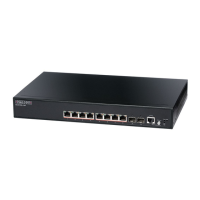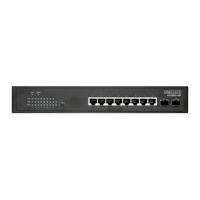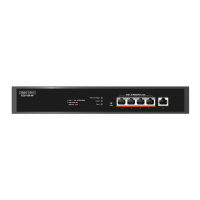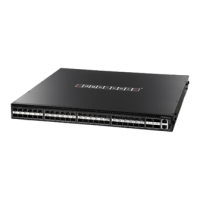Chapter 27
| IP Interface Commands
IPv6 Interface
– 681 –
For example, FE80::7272%1 identifies VLAN 1 as the interface from which the
ping is sent.
◆
When pinging a host name, be sure the DNS server has been enabled (see
page 631). If necessary, local devices can also be specified in the DNS static host
table (see page 632).
◆
When using ping6 with a host name, the switch first attempts to resolve the
alias into an IPv6 address before trying to resolve it into an IPv4 address.
Example
Console#ping6 FE80::2E0:CFF:FE00:FC%1
Press ESC to abort.
PING to FE80::2E0:CFF:FE00:FC%1/64, by 5 32-byte payload ICMP packets,
timeout is 3 seconds
response time: 20 ms [FE80::2E0:CFF:FE00:FC] seq_no: 1
response time: 0 ms [FE80::2E0:CFF:FE00:FC] seq_no: 2
response time: 0 ms [FE80::2E0:CFF:FE00:FC] seq_no: 3
response time: 0 ms [FE80::2E0:CFF:FE00:FC] seq_no: 4
response time: 0 ms [FE80::2E0:CFF:FE00:FC] seq_no: 5
Ping statistics for FE80::2E0:CFF:FE00:FC%1/64:
5 packets transmitted, 5 packets received (100%), 0 packets lost (0%)
Approximate round trip times:
Minimum = 0 ms, Maximum = 20 ms, Average = 4 ms
Console#
traceroute6
This command shows the route packets take to the specified destination.
Syntax
traceroute6
{ipv6-address | host-name} [
max-failures
failure-count]
ipv6-address - The IPv6 address of a neighbor device. You can specify either
a link-local or global unicast address formatted according to RFC 2373 “IPv6
Addressing Architecture,” using 8 colon-separated 16-bit hexadecimal
values. One double colon may be used in the address to indicate the
appropriate number of zeros required to fill the undefined fields.
host-name - A host name string which can be resolved into an IPv6 address
through a domain name server.
failure-count - The maximum number of failures before which the trace
route is terminated. (Range: 1-255)
Default Setting
Maximum failures: 5
Command Mode
Privileged Exec
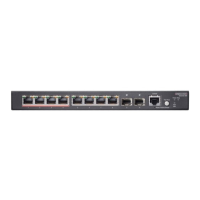
